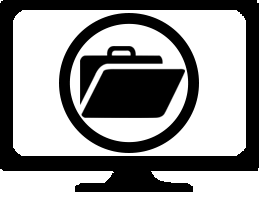Textbook-Free Courses

In April 2015, Inside Higher Ed hosted a webinar arguing that online courses should move away from using textbooks and instead adopt more open educational resources (OERs). Some key takeaways from the event include the following:
- The cost of textbooks for college students has increased 812% since 1978.

- Sometimes the cost of course materials forces students to withdraw due to the additional financial burden. However, if online courses use more free resources, the overall cost of education will go down for students, which would then hopefully encourage students to stay enrolled and thus increase institutions’ overall revenue from tuition.
- The OER approach allows faculty members to teach key concepts via lecture, e-book, or other means rather than students merely reading about these concepts in a textbook. Instructors can then use primary sources and external content to showcase and analyze the content.
- This article from Slate, published in September 2014, discusses the pros and cons of using publisher materials in courses.
Although there are many benefits to moving away from the use of textbooks, it can be difficult to rethink how a course can function without textbooks. After all, if a course used to revolve around reading textbook chapters and taking assessments from the same textbook, it can feel like you have to build a course from scratch if you get rid of that textbook. Here are some ideas for gathering and developing material to replace textbooks in your course.
Practical Ideas for Implementing a Textbook-Free Approach
Develop your own set of learning resources.
 You would benefit greatly from developing your own set of unique learning resources. By curating a list of current research articles and educational videos, you give yourself a ready-made, customized set of learning resources to pass on to students, whether as reading assignments, supplementary resources, or tools for feedback. You might even explore massive open online courses (MOOCs) as an alternative to a traditional textbook.
You would benefit greatly from developing your own set of unique learning resources. By curating a list of current research articles and educational videos, you give yourself a ready-made, customized set of learning resources to pass on to students, whether as reading assignments, supplementary resources, or tools for feedback. You might even explore massive open online courses (MOOCs) as an alternative to a traditional textbook.
Develop the course assessments.
 Consider developing your own course assessments. When you create authentic and practical assessments instead of relying on publisher test banks and textbook questions, you give your students a personalized experience that is unique to your institution and thus adds value to their education. For example, you could create an ongoing course assessment in which students develop a portfolio of their own articles or design work. Not only would this help students work toward learning objectives in your course, but it would also give them practical tools they can use when applying for work in their chosen field.
Consider developing your own course assessments. When you create authentic and practical assessments instead of relying on publisher test banks and textbook questions, you give your students a personalized experience that is unique to your institution and thus adds value to their education. For example, you could create an ongoing course assessment in which students develop a portfolio of their own articles or design work. Not only would this help students work toward learning objectives in your course, but it would also give them practical tools they can use when applying for work in their chosen field.
Foster independent student exploration and research.
 Instead of focusing on a single textbook, you can challenge students by designing learning environments that foster independent exploration and research. For example, in an economics course, you could introduce the 2008 financial crisis and then provide students with links to academic journals, newspapers, and even video clips that discussed the crisis as it unfolded. It is then up to students to find which articles or videos they think are most relevant and develop their own analysis of what caused the crisis. Give students the tools they need to succeed, and let them take an active role in their learning.
Instead of focusing on a single textbook, you can challenge students by designing learning environments that foster independent exploration and research. For example, in an economics course, you could introduce the 2008 financial crisis and then provide students with links to academic journals, newspapers, and even video clips that discussed the crisis as it unfolded. It is then up to students to find which articles or videos they think are most relevant and develop their own analysis of what caused the crisis. Give students the tools they need to succeed, and let them take an active role in their learning.
Build students’ self-directed learning skills.
 You may also consider using a scaffolding approach across multiple courses as a way to build students’ skills in self-directed learning. For example, a nursing program might choose an industry-specific journal for students to interact with throughout multiple courses. In a 100-level class, students might read articles and write summaries or personal reactions to them. In 200- and 300-level classes, students might go a step further and write analyses or critiques of the articles. Then in a 400-level class, students might write and submit an article to that journal for publication.
You may also consider using a scaffolding approach across multiple courses as a way to build students’ skills in self-directed learning. For example, a nursing program might choose an industry-specific journal for students to interact with throughout multiple courses. In a 100-level class, students might read articles and write summaries or personal reactions to them. In 200- and 300-level classes, students might go a step further and write analyses or critiques of the articles. Then in a 400-level class, students might write and submit an article to that journal for publication.
Conclusion
Although getting rid of textbooks may seem daunting at first, using and developing other resources allows instructors to expose students to a wider variety of resources and methods of learning that add value to their education and even their future careers.

